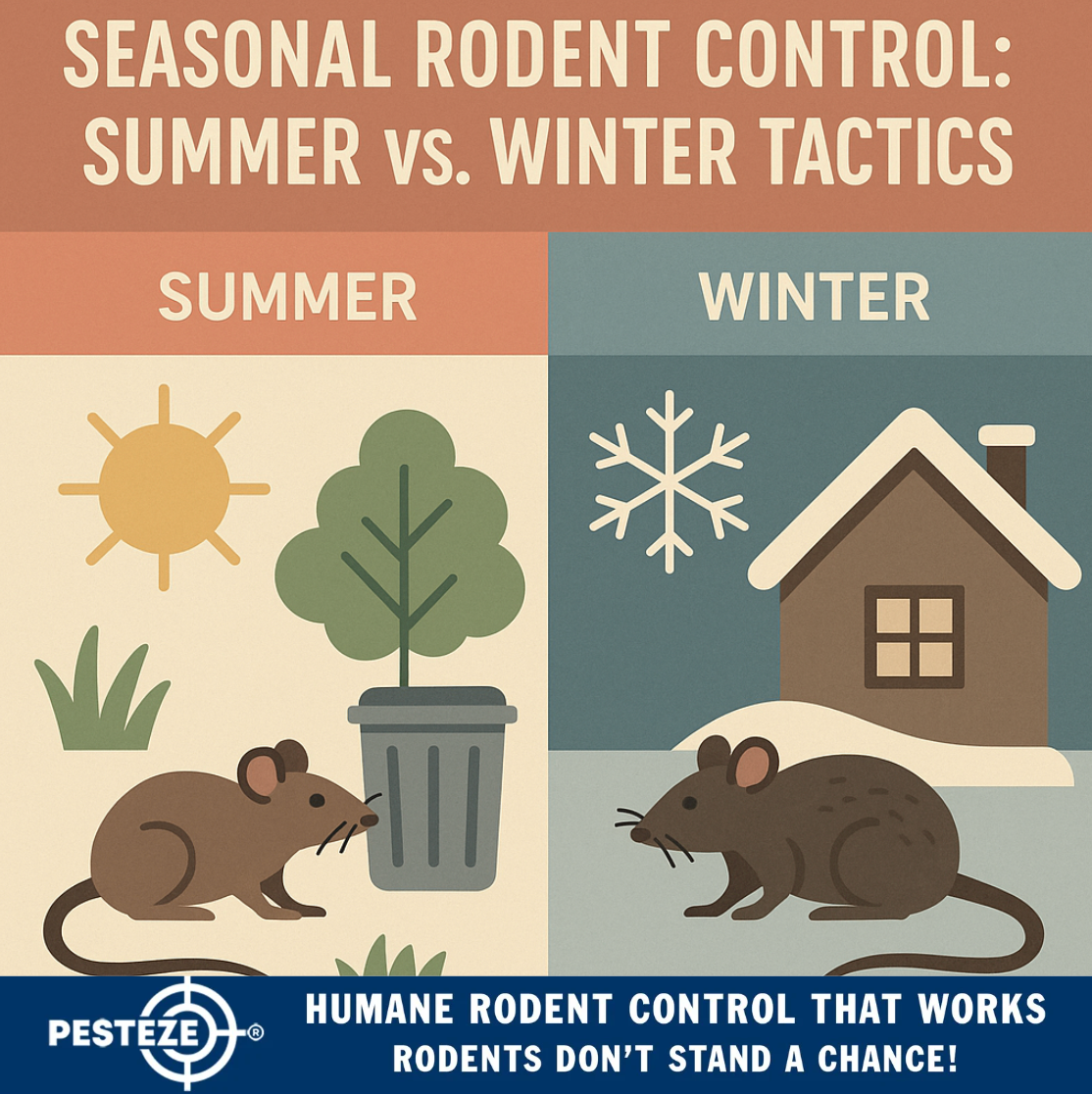SEASONAL RODENT CONTROL: SUMMER VS. WINTER TACTICS

SEASONAL RODENT CONTROL: SUMMER VS. WINTER TACTICS
SUMMARY
Rodent behavior changes with the seasons—what works in summer may not be effective in winter. Learn how to adapt your rodent control strategy year-round with targeted prevention, sanitation, and monitoring methods that keep pests out no matter the weather.
FEATURES
-
Summer Activity: Rodents seek food and water outdoors but may enter for shade.
-
Winter Invasion: Cold weather drives rodents indoors for warmth and nesting.
-
Entry Point Sealing: Reinforce cracks and gaps before temperature drops.
-
Outdoor Maintenance: Trim vegetation and manage waste during warm months.
-
Indoor Monitoring: Use traps and deterrents in basements and attics in winter.
-
Year-Round Strategy: Combine prevention, inspection, and professional support.
DESCRIPTION
Effective rodent control requires understanding how rodents behave across different seasons. As temperatures shift, their priorities—food, water, and shelter—change, influencing where and how infestations occur. Adjusting your tactics between summer and winter ensures consistent protection throughout the year.
During summer, rodents tend to remain outdoors where food sources are abundant. Gardens, compost piles, and garbage bins attract them, especially in warm, humid conditions. To prevent infestations, focus on outdoor sanitation and exclusion. Keep trash tightly sealed, eliminate standing water, and trim back overgrown vegetation that provides cover. Store pet food indoors and inspect fences, sheds, and garages for entry points.
In contrast, winter brings a surge in indoor infestations. As temperatures drop, rodents look for warmth and nesting areas inside walls, attics, and basements. Seal cracks around foundations, pipes, vents, and doors before winter arrives. Insulating vulnerable areas can help reduce access points while improving energy efficiency.
Indoor prevention in winter also means increased monitoring. Place traps or bait stations in hidden, warm areas where rodents are likely to travel—behind appliances, under cabinets, or near storage boxes. Check frequently and refresh baits as needed.
While summer control emphasizes outdoor management, winter control focuses on indoor defense. Still, both seasons require sanitation and structural maintenance. Keeping food sealed, cleaning storage areas, and maintaining regular inspections create year-round protection.
Professional pest control services can also help with seasonal adaptation. Experts can provide seasonal inspections, identify entry vulnerabilities, and implement preventive treatments before problems arise.
By anticipating rodent behavior patterns and tailoring control methods for each season, you can maintain a rodent-free property and prevent costly infestations year after year.
- Saharsh Bansal


Comments 0